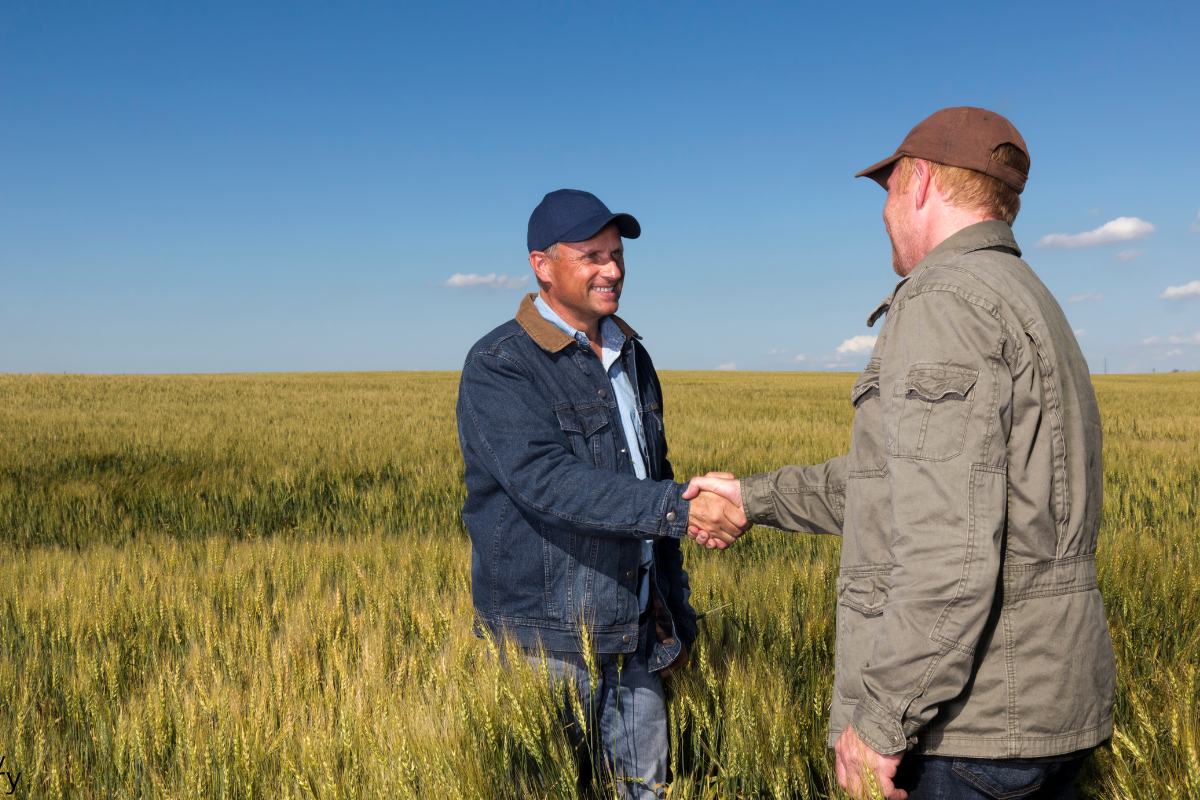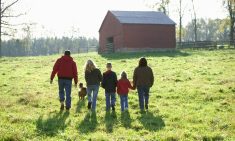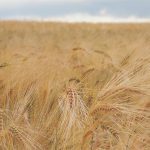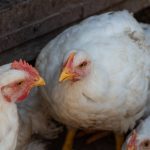Is the world really made of up “dreamers” and “doers”? And if so, which one comes out ahead?
Poet Henry Wadsworth Longfellow believed that “One half of the world must sweat and groan that the other half may dream.”
Dreamers, who are more inclined towards imagination, creativity and possibilities, are in stark contrast to doers who favour methodology, practicality and getting things done.
Read Also

Are you ready for farm succession?
What motivates some farmers to make a succession plan while others don’t seem worried.
But is it true that only one half works while the other half fritters away their days in dreamland with nothing to show for it?
Recent data suggests Longfellow’s numbers are a bit off.
An analysis by Ourmental.health estimates that three-quarters of the population have personality traits making them more likely to be “doers” while only a quarter tend more towards “dreaming.”
How do those numbers hold up among farmers? Interestingly, the data shows much the same.
Research shows that the most common personality types of North American farmers feature “doer” traits such as practicality, reliability and structure, skills that are undeniably required to be a farmer.
But that doesn’t mean farmers aren’t also dreamers.
Data on Careerexplorer.com show that dreamer characteristics, such as curiosity and problem-solving, are particularly high among farmers.
And many in the agriculture industry also believe this is true.
Val Panko, a business advisor with Farm Credit Canada, is one of them.
Panko has worked with farmers for nearly 25 years. She believes the unique nature of the job nurtures a combination of dreaming and doing, especially in different contexts and seasons.
In a previous role at the Government of Saskatchewan’s Ag Knowledge Centre in Moose Jaw, Sask., Panko recalls receiving a higher number of calls from farmers when they were spending long hours in the tractor and had time for their minds to wander.
“They do all their dreaming on the tractor because they’re just sitting there thinking, their wheels are turning,” Panko says. “So, during seeding and harvest, they will cook up the craziest ideas. Some of them were nuts.”
Panko also spent many years in commercial banking, where she worked closely with farmers and entrepreneurs. She believes there are similarities between the two, but also major differences.
“Entrepreneurs are dreamers, they are visionaries, but they don’t finish a lot of things,” she says. “But farming by its nature probably trains you out of that. You can’t halfway seed your field and move on to something else.”
She says she sees a lot of farmers with entrepreneurial or “dreamer” tendencies who channel them strategically on the farm.
“We see that come through in the creativity in their operations,” she says, pointing to examples such as diversifying crops and being early adopters of new technology.
“I think they find ways to feed that fire.”
Panko isn’t the only one who believes this. Several other farmers believe they’ve been able to achieve some big goals by balancing their “dreamer” and “doer” tendencies.
Too stubborn to give up
Katlin Lang says he’s a dreamer — to a certain point.
“I have a lot of dreamer in me, and then when I dream enough, it spills over to the doer side,” he says, laughing.

The farmer-turned-entrepreneur, who grew up on a cattle ranch in southern Saskatchewan, credits his farming background, mixed with his dreamer qualities, for helping him achieve big goals in recent years.
In 2020, Lang and a partner launched Farm Simple Solutions, an ag tech company that builds and sells products to help ranchers manage their cattle operations remotely.
The dream for these products was born in 2018, when Lang’s friend Mike, also a rancher, asked him to design a product that would notify him when the water level for his cows was getting low.
Lang dreamed up what such a product could look like and, having studied electronic systems engineering at the University of Regina, knew he could build it.
“I had never built anything like this before, but it was something that I was very certain I could do, and I wanted to prove to both myself and Mike that it could be done.”
After he developed the prototype, and several other products for Mike, Lang decided to start his own company.
“I really wanted to build a company, to do something myself.”
Although designing the products came easily to Lang, he says launching a company was a lot more complicated.
“It has been quite a challenge. You go through periods where people aren’t buying so you start questioning ‘What am I doing wrong?’”
He credits his farming background with giving him the “doer” attitude and the grit to just keep going.
“When you’re on the farm, especially with cattle, every day is hard,” he says. “It’s hard to go out in the cold, it’s hard to feed the cattle. Stuff freezes and you have to fix it. And you just accept that you have to do it.”
After four years, he feels his farm-kid-grit is finally starting to pay off.
“I’m too stubborn to give up. And I just keep telling myself if I’m still here doing this, something is going to come out of it,” he says.
“I feel like only now we’re really starting to get traction. People are noticing us and really trusting the brand.”
Farmers appreciate simplicity
Ron Gramlich believes that farmers have a unique ability to combine dreaming and doing to create and achieve realistic goals, because he’s one of them.
After farming for many years in central Alberta, in 2005 Gramlich had a dream born out of necessity.
“We were keeping our fertilizer bins as full as we could, and people were having to crawl up and hit the side of the bin to tell what level was inside. Of course, in busy seasons everybody’s tired and it’s just a matter of time before somebody’s going to fall.”

This safety hazard inspired him to create a solution, based on a very simple design: a puck on a rope.
“I welded up some brackets and I put the first ones up within a couple of days of coming up with the idea and have just kind of improved on it since.”
That simple design later became the BinKnocker, a product now sold throughout North America.
Although Gramlich says he’s “not enough of a doer” to make all his dreams for farm products happen, this one was different.
“It was something that was directly in front of me, that I needed to deal with every day, that was very much safety oriented,” he says, adding he also liked the simple design of it. “Farmers tend to like simplicity.”
Although Gramlich says business has been slow at times, with sales coming in flurries, he still stands firmly behind the product, especially its effectiveness and simplicity.
“I have always been excited and confident that the BinKnocker is a useful tool that every farmer could benefit from. Its simplicity makes its usefulness easy to overlook.”
Anything is possible
Ted Cawkwell is a dreamer who sees opportunities rather than obstacles. And he believes this has made a big difference in his career.
“I like to think outside the box,” he says.
This attitude is what drove him, along with his brother and another business partner, to build their own Saskatchewan-based grain farm from scratch a decade ago.
At the time, farmland prices were at a historic high, ranging between $1,000 and $3,500 an acre in Saskatchewan.
“Everyone told us: ‘Oh, you can’t do that anymore.’”
But Cawkwell, an entrepreneur who also owns an agriculture real estate brokerage, wasn’t deterred.
The team started slowly, farming a few hundred acres the first year, most of which was rented. They all worked off-farm jobs for the first several years (Cawkwell still does) and slowly acquired more land as it was available and they had the means to finance it.
Last year, they seeded 7,600 acres.
“We were creative,” says Cawkwell.
This creativity is key, he believes, in a world focused on negatives — especially when it comes to farmland ownership and farming.
“It’s just become normal to say, ‘It can’t happen,’” he says.
“I would like if people started talking about how it can happen. I’m living proof. Anything’s possible.”
Growing up on a grain farm in Saskatchewan, and now working in the agriculture sector, Cawkwell also believes that farmers have a unique mixture of personality traits transcending dreaming and doing.
“They’re the toughest, most ingenious people on the planet. They’re absolutely mentally and emotionally strong. We need to start having these conversations about how things can happen.”
Balancing your internal dreamer and doer
Most experts believe that everyone has the ability to both dream and get things done, despite our natural tendencies, and that it’s important to nurture both associated skill sets in order to achieve goals.
This is especially true in agriculture.
In her current role, Panko focuses on helping farmers create plans for transitions and succession, but she says regardless of what your farm goal is, you need to start with a strategy.
“A business strategy, or your farm strategy, is where that dream hits the doing. Ultimately, that’s where they should collide,” she says.
“If you’ve got dreams, you need to connect all the dots to make sure that what you’re doing is forwarding that dream.”
If you’re more of a dreamer, a plan or strategy will help you stay focused, which is especially important in this busy sector, she says.
“There’s always a fire to put out. You need to make sure that your day-to-day, week-to-week, month-to-month decisions back up your long-term strategy.”
For farmers who tend more towards doing, she advises leaning into a “dreaming” mindset to understand what your big-picture goals are, and to ensure all your hard work is supporting them.
“You should have a bigger plan, even if it is just to keep everything maintained and in good shape for the next generation. It’s not a fancy dream but that’s a solid strategy.”
















